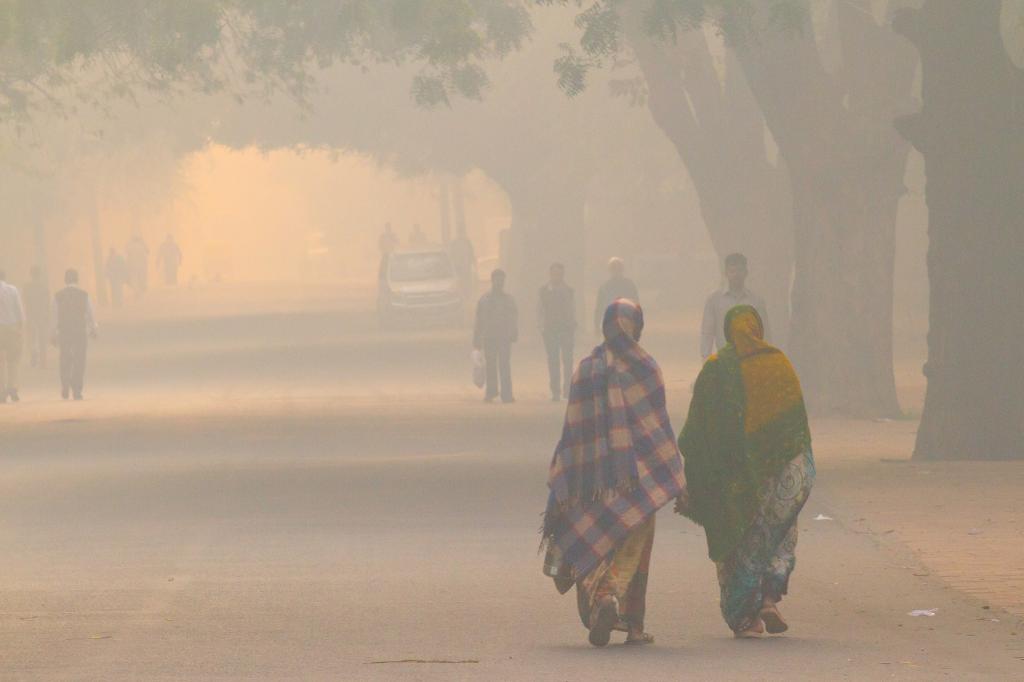

Delhi government has advised people with heart or lung disease, older adults and children to remain indoors



With winter slowly setting in and wind speed dying, Delhi’s Diwali revelry with firecrackers has made the atmosphere hazardous in several places leading to a 42 per cent rise in the air pollution index, according to a Delhi government release issued earlier on Monday (October 31). System of Air Quality and Weather Forecasting And Research (SAFAR) under the Ministry of Earth Sciences has advised people to avoid all outdoor physical activity till the air quality improves.
“People with heart or lung disease, older adults and children should remain indoors and keep activity levels low. There is health warning for emergency conditions and serious risk of respiratory effects in general public,” the release said. Incidentally, Delhi government official released a fresh set of figures on Monday afternoon, saying that there was an error in collating the data from one of the air pollution monitoring stations of the Delhi Pollution Control Committee (DPCC). “However, the change in figures is just marginal as the air quality continues to be worse in the next coming days,” the official said.
R K Puram and Anand Vihar among the worst-hit neighbourhoods in Delhi
An earlier reading showed PM10—extremely fine particles that cause respiratory as well as pulmonary diseases in mammals—at 4,273µg/m³ from one of its stations in R K Puram in South Delhi. However, the estimate was revised to 939µg/m³. PM2.5 from the same station was recorded at 748µg/m³.
According to the DPCC, the most polluted corner on Diwali night was Anand Vihar, where PM 2.5 was recorded at 888µg/m³ at 1 am while PM10 was 1684µg/m³ at 2 am. On Diwali day, the average concentration (for 24 hours) for PM10 ranged from 448µg/m3 to 939µg/m3 across the city. The figures also showed an increase in PM10 levels from the 2015 Diwali when the average concentration (for 24 hours) for PM10 was between 296µg/m3 and 778µg/m3. The prescribed standards of PM 2.5 and PM 10 are 60µg/m3 and 100µg/m3 respectively.
Similarly, there was a significant rise in the level of nitrogen oxide (NOx) on the Diwali day this year, with the average concentration varying from 70.0µg/m3 to 123.0µg/m3 in 24 hours. In 2015, the average concentration of NOx varied from 37.0µg/m3 to 79.0µg/m3. This year, the maximum concentration of NOx was recorded from Punjabi Bagh in West Delhi. Other pollutants showed a marked increase during this year’s Diwali celebrations.
A Delhi government release, however, points to a host of factors which states that Delhi is reeling under adverse weather conditions and impact of trans-state movement of pollutants, especially due to burning of agricultural fields. Meanwhile, Haryana recorded 1,178 instances of paddy burning incidents, which Delhi government says is a major cause of pollution. In the view of these conditions, the government had appealed to citizens of the national capital to restrain from using fireworks. As a part of the mitigation strategy, Delhi Chief Minister, Arvind Kejriwal appointed a task force to tackle air pollution and solid waste management on Monday headed by Health Minister Satyendar Jain with Environment Minister Imran Hussain and Water Minister Kapil Mishra as its members. Jain will initiate the implementation of its road map from this week.
On October 28, the Centre for Sciecne and Environment had issued a press release stating that there's no room for additional pollution in the city, especially from crackers.
We are a voice to you; you have been a support to us. Together we build journalism that is independent, credible and fearless. You can further help us by making a donation. This will mean a lot for our ability to bring you news, perspectives and analysis from the ground so that we can make change together.
India Environment Portal Resources :

Comments are moderated and will be published only after the site moderator’s approval. Please use a genuine email ID and provide your name. Selected comments may also be used in the ‘Letters’ section of the Down To Earth print edition.